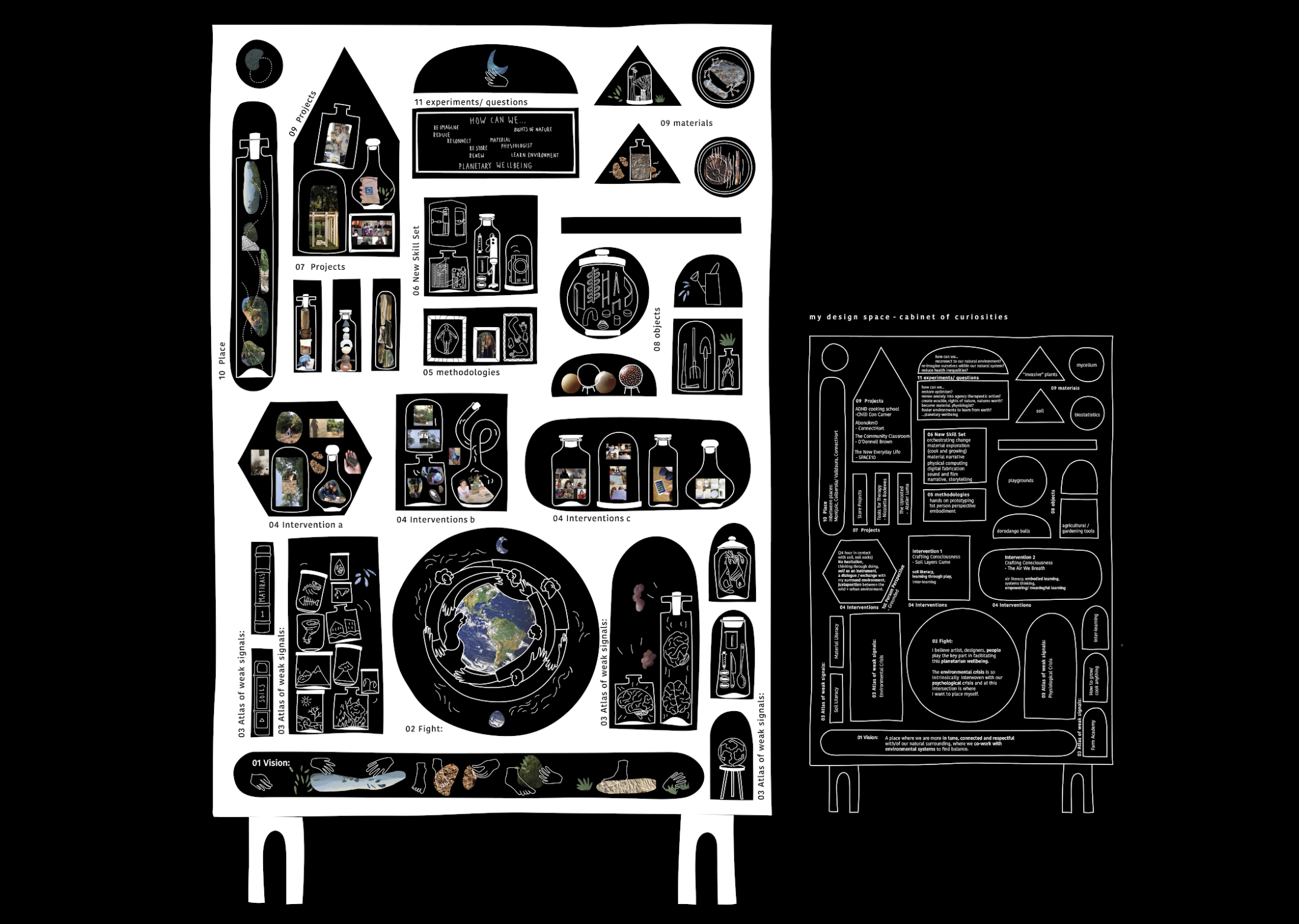Design Spaces
A design space is a physical or digital collection of experiments, reference objects, projects, products or materials that support the development of the student’s intervention as an action research exercise. It can integrate prototypes and projects developed previously, personal information from self-reflexive activations like the My New Me, My Augmented Context, Atlas of Weak Signals, or Multi-scalar Mapping.
Prompt: Create a design space that is adaptable and can grow over time including the state of the art, your weak signals, resources, and personal projects. Frame your ideas in relation to your area of interest. Create a design space where these relationships are visible. Your design space should contain at least:
- 3 objects/products that represent the issues you are enquiring in a tangible way.
- 3 kinds of materials that express some of the qualities of these issues. (If you had to represent your issue through materials, which would they be?).
- 3 reference projects or initiatives that are working around those issues (pictures, blueprints, etc)
- 2 reference technologies / methodologies that are being used to investigate/attend those situations
- 2 possible contexts where you live in which you would be interested to place an intervention
- 2 experiments that allow you to prototype your intervention.
The format of this deliverable can be physical or digital, but document it with pictures or screenshots to submit to your drive folder and share with the class.

Morgane Sha’ban, Master in Design for Emergent Futures, 20/21. As a metaphor to organize all the elements and dimensions of her research, Morgane compiled in a “cabinet of curiosities” her vision, her fight, her chosen weak signals, her interventions, her tools and methodologies, the referenced projects, materials and places, depicting in this way her Design Space.